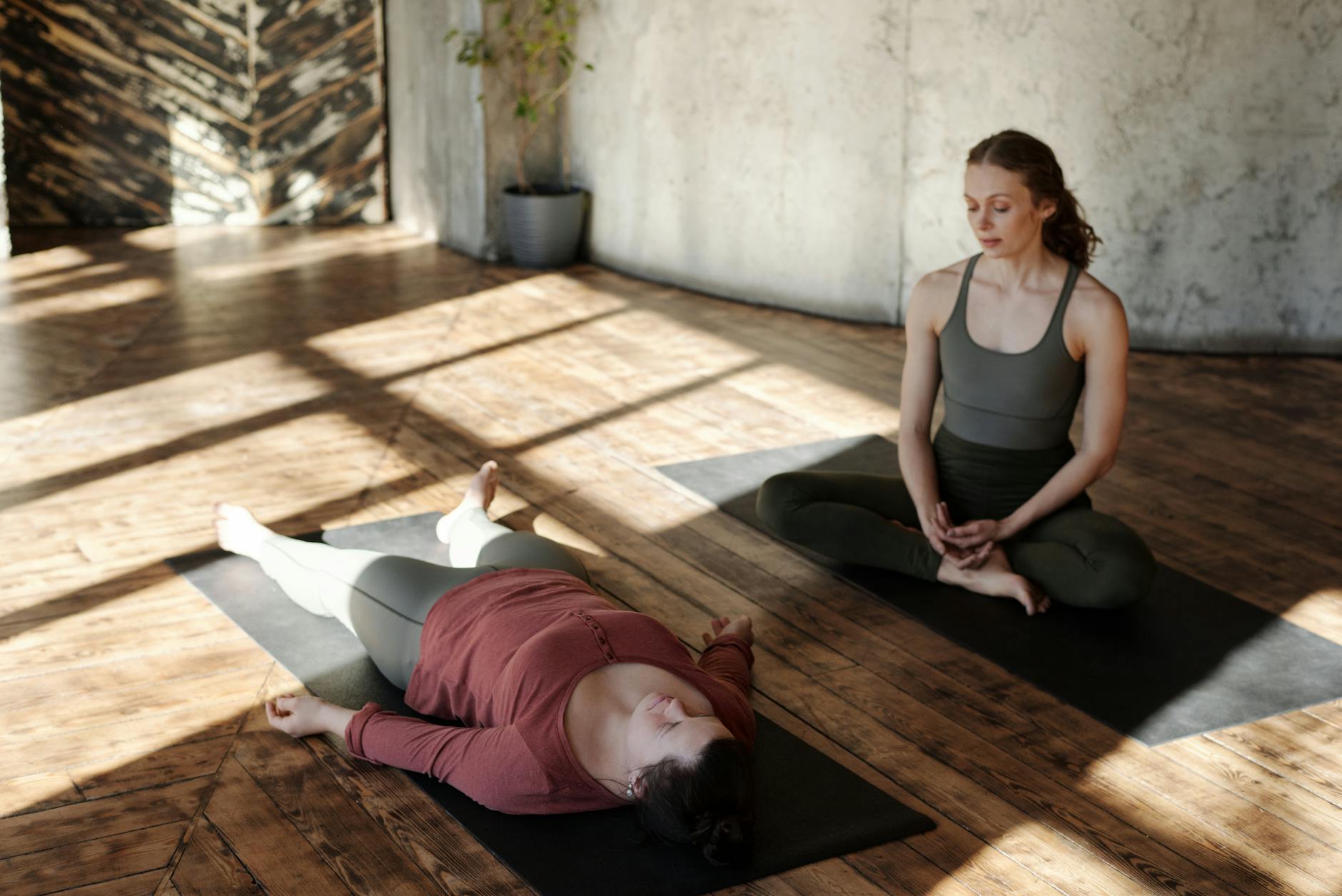In today's fast-paced world, stress has become an inevitable part of our lives. Mindfulness meditations offer a powerful solution to help calm the mind and alleviate the pressures we face on a daily basis. By practicing mindfulness, we can cultivate a deep sense of awareness and learn to focus our attention on the present moment. In this blog post, we will explore effective techniques that can aid in reducing stress and promoting overall well-being. Whether you are new to mindfulness or looking to deepen your practice, these tools will provide you with the necessary guidance to find inner peace amidst the chaos. Let's delve into the transformative world of mindfulness meditations and discover how they can positively impact your life.
Understanding Mindfulness Meditation
Mindfulness meditation is a powerful technique that offers numerous benefits for stress relief and overall mental well-being. By understanding what mindfulness meditation is and how it can positively impact your life, you can begin to incorporate this practice into your daily routine.
What is Mindfulness Meditation?
Mindfulness meditation is a form of meditation that involves focusing your attention on the present moment while acknowledging and accepting your thoughts, sensations, and emotions without judgment. It is about cultivating a state of heightened awareness and being fully present in the here and now.
When practicing mindfulness meditation, you intentionally direct your attention to your breath, bodily sensations, or an object of focus, such as a sound or a mantra. As thoughts arise, you acknowledge them without getting caught up in them, gently bringing your attention back to your chosen focal point.
Benefits of Mindfulness Meditation for Stress Relief
Mindfulness meditation has been scientifically proven to have numerous benefits for stress relief and overall well-being. Here are some of the key advantages:
- Reduced Stress and Anxiety: Mindfulness meditation helps to calm the mind and reduce stress and anxiety levels. By practicing regular mindfulness meditation, you can develop a greater sense of calmness and resilience in the face of life's challenges.
- Improved Focus and Concentration: Through the practice of mindfulness meditation, you can enhance your ability to concentrate and stay focused. This increased mental clarity can promote productivity and efficiency in your daily activities.
- Enhanced Emotional Well-being: Mindfulness meditation promotes emotional well-being by helping you develop a non-reactive and non-judgmental attitude towards your thoughts and emotions. It allows you to observe your feelings without being overwhelmed by them, leading to greater emotional balance.
- Better Sleep Quality: Regular practice of mindfulness meditation has been shown to improve sleep quality. By calming the mind before bedtime, you can alleviate racing thoughts and anxiety, allowing for a more restful and rejuvenating sleep.
- Strengthened Resilience: Mindfulness meditation cultivates a sense of inner strength and resilience. It equips you with the tools to navigate life's challenges with greater grace and equanimity.

Photo by Lucas Pezeta
Incorporating mindfulness meditation into your daily routine can have a profound impact on your overall well-being. The next section will explore various techniques for practicing mindfulness meditation for stress relief.
Getting Started with Mindfulness Meditation
Practicing mindfulness meditation can be an effective technique to calm your mind and reduce stress. Before diving into the practice, it's important to create a quiet and calm environment, find a comfortable position, and focus on your breath. Let's explore each of these aspects in detail:
Creating a Quiet and Calm Environment
A peaceful environment is essential for effective mindfulness meditation. Find a quiet space where you can minimize distractions and interruptions. Here are a few steps to help create a serene atmosphere:
- Choose a room or corner in your home where you feel most relaxed.
- Turn off or silence any electronic devices that may cause distractions.
- Dim the lights or use soft, soothing lighting to set a tranquil mood.
- Consider using calming elements such as candles, essential oils, or soft instrumental music.
Remember, the goal is to create an environment that promotes relaxation and allows you to focus solely on your meditation practice.

Photo by Ketut Subiyanto
Finding a Comfortable Position
Once you've set up your meditation space, it's time to find a comfortable position. Whether you choose to sit or lie down, the key is to find a posture that allows you to feel both relaxed and alert. Here are a few suggestions:
- Sitting Position: Sit cross-legged on a cushion or chair with your back straight, but not rigid. Rest your hands on your thighs or gently place them in your lap.
- Kneeling Position: Kneel on a cushion or yoga mat with your buttocks resting on your heels. Keep your spine straight and your hands relaxed on your thighs or in your lap.
- Lying Down Position: If sitting or kneeling is uncomfortable, you can also practice mindfulness meditation while lying down. Lie on your back with your legs straight and arms resting by your sides. Place a pillow under your head and another under your knees for added comfort.
Choose a position that suits your body and allows you to maintain a sense of relaxation and alertness throughout your practice.
Focusing on Your Breath
Once you're in a comfortable position, bring your attention to your breath. The breath serves as an anchor, grounding you in the present moment. Follow these steps to cultivate mindful breathing:
- Close your eyes or maintain a soft gaze, whichever feels more comfortable for you.
- Take a few deep breaths, inhaling through your nose and exhaling through your mouth. Allow the tension to release with each exhale.
- Shift your focus to the natural rhythm of your breath. Notice the sensation of the cool air entering your nostrils as you inhale and the warm air leaving your body as you exhale.
- As thoughts arise, gently acknowledge them without judgment and return your attention to the breath. It's completely normal for the mind to wander; the key is to gently guide it back to the present moment.
By focusing on the breath, you develop a sense of mindfulness and cultivate a greater awareness of the present moment.
Remember, mindfulness meditation is a skill that improves with practice. Take your time, be patient with yourself, and embrace the journey towards a calmer mind and reduced stress.
Stay tuned for the next sections to explore additional techniques for mindfulness meditation and stress relief.
Mindfulness Meditation Techniques for Stress Relief
Mindfulness meditation techniques are powerful tools that can help calm your mind and alleviate stress. By practicing these techniques regularly, you can cultivate a greater sense of presence and awareness in your daily life. In this section, we will explore four effective mindfulness meditation techniques for stress relief: Body Scan Meditation, Loving-Kindness Meditation, Walking Meditation, and Mantra Meditation.
Body Scan Meditation

Photo by Cliff Booth
Body Scan Meditation is a practice that involves bringing your attention to different parts of your body, from head to toe, and noticing any sensations or areas of tension. This technique helps you develop a deeper connection with your body and can promote relaxation and stress relief.
To practice Body Scan Meditation, find a comfortable position either sitting or lying down. Close your eyes and begin by taking a few deep breaths to settle into the present moment. Start directing your attention to the top of your head and slowly move down through your body, observing any sensations or areas of discomfort along the way. As you encounter tension or discomfort, take a moment to breathe deeply into that area and release any tension with each exhale. Allow yourself to fully relax and let go as you complete the scan of your entire body.
Loving-Kindness Meditation

Photo by RF._.studio
Loving-Kindness Meditation, also known as Metta Meditation, focuses on cultivating feelings of love, kindness, and compassion towards yourself and others. This practice can help reduce stress by promoting positive emotions and fostering a sense of connectedness with the world around you.
To start Loving-Kindness Meditation, find a comfortable sitting position and close your eyes. Begin by bringing to mind someone you love and care for deeply. Picture them in your mind and silently repeat a series of phrases such as "May you be happy, may you be healthy, may you be safe, may you live with ease." Feel the warmth and compassion flowing from your heart towards that person. After a few minutes, expand your circle of compassion to include yourself, loved ones, acquaintances, and even challenging individuals. Repeat the phrases for each person, radiating love and kindness with each repetition.
Walking Meditation

Photo by Eren Li
Walking Meditation is a form of mindfulness practice that involves bringing your full attention to the act of walking, allowing yourself to be fully present and engaged with each step. This technique can be especially beneficial for relieving stress and grounding yourself in the present moment.
To practice Walking Meditation, find a quiet and peaceful location to walk, preferably in nature. Begin by standing still and taking a few deep breaths to center yourself. As you start walking, pay attention to the sensations of your feet touching the ground, the movement of your body, and the surrounding environment. Stay fully present as you take each step, observing the rhythm and flow of your walking. If your mind starts to wander, gently bring your focus back to the sensation of walking. Engage all your senses by noticing the sights, sounds, and smells around you. Allow yourself to experience a sense of calm and peace as you continue walking mindfully.
Mantra Meditation
Mantra Meditation involves the repetition of a sacred word or phrase to focus and calm the mind. By chanting or silently repeating a mantra, you can redirect your thoughts, release stress, and cultivate inner clarity and peace.
To practice Mantra Meditation, find a quiet and comfortable place to sit. Choose a simple and meaningful mantra that resonates with you, such as "Om" or "Peace." Close your eyes, take a few deep breaths, and silently repeat your chosen mantra. As you repeat the mantra, let go of any distracting thoughts and allow the sound and vibration of the words to envelop your mind. Stay focused on the repetition of the mantra, letting it bring you into a state of deep relaxation and tranquility.
Incorporate these mindfulness meditation techniques into your daily routine to experience the calming benefits they offer. Whether you choose to practice Body Scan Meditation, Loving-Kindness Meditation, Walking Meditation, or Mantra Meditation, each technique has the potential to help you find relief from stress and cultivate a more peaceful and centered state of mind.
Tips for Deepening Your Mindfulness Meditation Practice
Consistency is Key
To deepen your mindfulness meditation practice, consistency is crucial. Just like any skill, the more you practice, the better you become. By setting aside dedicated time each day for meditation, you can create a routine that strengthens your mindfulness muscles and allows you to experience the full benefits of this practice. Consistency helps to train your mind to stay present and focused, even when faced with stressful situations.
Start with Short Sessions
When starting out or trying to deepen your mindfulness practice, it's important to begin with shorter meditation sessions. This allows you to build up your mental stamina gradually without feeling overwhelmed or frustrated. Aim for just a few minutes each day and gradually increase the duration as you become more comfortable. Remember, the goal is to cultivate a habit of mindfulness, and starting small ensures a sustainable practice.
Embracing Non-Judgment
One of the key principles of mindfulness is embracing non-judgment. As you engage in your meditation practice, it's common for thoughts, emotions, and sensations to arise. Instead of labeling them as good or bad, right or wrong, try to observe them without judgment. Treat your thoughts and feelings as passing clouds in the sky, acknowledging their presence but not becoming attached to them. By cultivating a non-judgmental attitude, you allow yourself to experience a sense of inner peace and acceptance.

Photo by Sebastian Ervi
Incorporating these tips into your mindfulness meditation practice can help you deepen your experience and find greater calm and clarity in your daily life. Remember, consistency, starting small, and embracing non-judgment are the keys to unlocking the full potential of this powerful practice.
Integrating Mindfulness into Daily Life
Living mindfully doesn't have to be reserved for dedicated meditation sessions alone. By integrating mindfulness into our daily lives, we can cultivate a deeper sense of presence and peace. Here are three practical ways to incorporate mindfulness into your daily routine: mindful eating, mindful walking, and mindful breathing.
Mindful Eating

Photo by Any Lane
Mindful eating is about bringing awareness and attention to the experience of eating. It involves fully engaging our senses and savoring each bite. Rather than rushing through meals or eating on autopilot, we can use mealtime as an opportunity to slow down and connect with our bodies and the nourishment we're providing.
Here are a few tips to practice mindful eating:
- Pause before you start your meal and take a moment to express gratitude for the food in front of you.
- Eat slowly and chew each bite thoroughly, paying attention to the flavors, textures, and sensations.
- Put away distractions like phones or TVs to focus solely on the act of eating.
- Tune into your body's hunger and fullness cues and eat until you feel satisfied, not overly full.
By incorporating mindful eating into your routine, you can enhance your relationship with food, develop healthier eating habits, and cultivate a greater sense of enjoyment and satisfaction during meals.
Mindful Walking

Photo by Victoria Emerson
Mindful walking is a practice that involves bringing your attention to the present moment while walking. Whether you're taking a stroll in nature or simply walking from one room to another, this practice can help you reconnect with your body, surroundings, and the act of walking itself.
Here's how you can practice mindful walking:
- Begin by standing still and taking a few deep breaths, grounding yourself in the present moment.
- As you start walking, pay attention to the physical sensations of each step: the movement of your feet, the contact with the ground, and the shifting of your weight.
- Notice the sensations in your body as you walk, the rhythm of your breath, and the sights and sounds around you.
- Stay curious and engaged with your environment, observing the details of nature or the buildings and people around you.
Mindful walking can help you find moments of calm and clarity amidst the busyness of everyday life, and it can serve as a form of gentle exercise that nourishes both the body and mind.
Mindful Breathing

Photo by Mo Eid
Mindful breathing is a foundational practice in mindfulness. It involves directing your attention to the breath, using it as an anchor to the present moment. By focusing on the breath, you can cultivate a sense of calm, reduce stress, and increase self-awareness.
Here's a simple mindful breathing technique to try:
- Find a comfortable seated position or lie down.
- Close your eyes and take a few deep, cleansing breaths.
- Bring your awareness to the natural flow of your breath, without trying to control or change it.
- Notice how the breath feels as it enters and leaves your body, the sensation of the air passing through your nostrils or the rise and fall of your belly.
- Whenever your mind wanders, gently bring your attention back to the breath, without judgment or criticism.
Practicing mindful breathing regularly can help you develop a greater capacity to stay present, manage stress, and cultivate a greater sense of inner peace and balance.
By incorporating mindful eating, mindful walking, and mindful breathing into your daily life, you can nurture a more mindful and fulfilling existence. These practices offer an opportunity to infuse your day with mindfulness, promoting a sense of well-being and fostering a deeper connection with yourself and the world around you.
Conclusion
In conclusion, mindfulness meditation is a powerful technique that can help calm your mind and alleviate stress. By practicing regular mindfulness, you can develop a greater sense of awareness, cultivate a non-judgmental attitude, and improve your ability to focus and stay present in the moment. The various techniques discussed in this article, such as deep breathing, body scan, and visualization, can be effective tools in your mindfulness practice.
Remember, consistency is key. Dedicate a few minutes each day to engage in mindfulness meditation, and over time, you will notice the positive impact it has on your stress levels and overall well-being. Whether you're a beginner or have been practicing for a while, there are many resources available to guide you through your mindfulness journey.
So, take a deep breath, let go of any tension, and start incorporating mindfulness meditations into your daily routine. Your mind and body will thank you for it.








